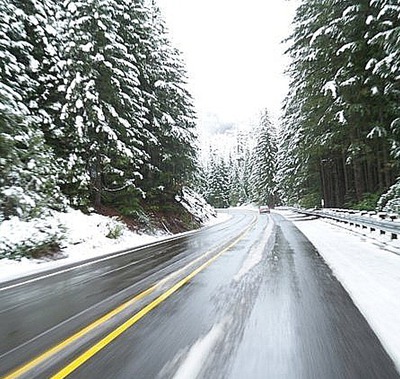Winter Driving Tips to Help You Stay Safe on The Road!
Driving in snow or ice can be a daunting experience. This is especially true if you’ve grown up somewhere where you haven’t been exposed to these challenges. There are some tips, however, that will make the experience less harrowing and safer for both you and your precious cargo. Many modern cars have features which will help you control your car on slippery roads. Traction control, ABS braking and modern stability control systems use several of these features simultaneously and are designed to keep your vehicle under control during winter driving. But to rely entirely on your vehicle’s modern safety systems won’t keep you out of trouble under all circumstances.
Here are a few tips for winter driving:

Use smaller, more subtle inputs with all your controls. Accelerate as though you have a fresh egg between your shoe and the accelerator pedal. The same level of pressure should be used with your braking foot. Even your steering wheel should get gentle inputs. The reason for these gentler inputs is that they will help you maintain traction. Once a tire loses traction on slippery roads, your control is dramatically reduced and your options become very limited.
If you lose traction while driving around a corner, one of two things is going to happen: either your front tires or your rear tires will lose grip.
If your front tires lose traction, this is call “understeer”. Understeer is typically the result of too much speed, too much steering input, or a combination of the two. During severe understeer, your car will continue on the path it is traveling instead of actually turning around the corner. Correcting for understeer requires gradual reduction of steering input, as well as a gradual reduction of throttle input. If you get the mix right, you can regain front wheel traction and control of your car’s ability to steer through the corner.
If your rear tires lose traction, this is called “oversteer”. Oversteer will cause the back end of your car to break loose and start to send the car into a spin. Correction for oversteer requires steering in the opposite direction of the spin while maintaining moderate throttle input. Some people call this “steering into the turn” or “opposite lock” steering. If you’re going around a left-hand turn and the back end starts to get loose, your steering input should be to the right, or in the same direction the back end your vehicle is traveling. Opposite lock steering input will actually straighten the car out. The main thing to keep in mind during an oversteer situation is that you must not lift off the gas pedal entirely – this will send your car into a spin. Lifting off the gas, especially with a rear wheel drive car, transfers weight to the rear wheels which have already lost traction, causing your car to spin like a pinwheel.
If you’re unfortunate enough to be heading towards a curb and it feels inevitable that you’re going to hit it, straighten the steering wheel and try to hit it straight on. Your car’s suspension is designed to absorb impact when the wheels are straight. If you hit a curb with the side of the wheel you will risk greater damage to your vehicle’s suspension.
Most of these tips are common sense, but they require discipline and practice to perfect. If you can find a winter driving clinic, you’ll be able to learn from an experienced coach. There’s no substitute for instruction and experience!
ArborMotion: European Auto Repair in Ann Arbor You Can Trust!
At ArborMotion, we specialize in European auto repair in Ann Arbor. All our technicians are ASE certified and three have ASE Master Technician certifications. If you want a reputable technician who specializes in your brand of vehicle, schedule an appointment with us today! We’ll help you keep your car well maintained during winter driving months and throughout the year!











